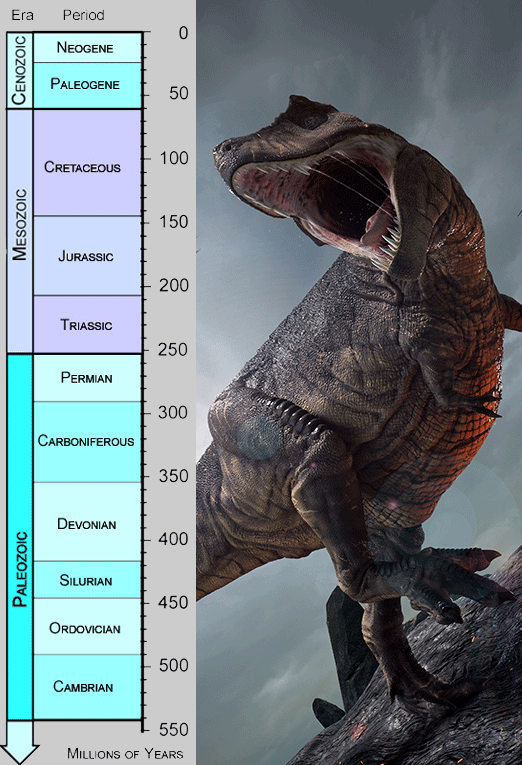
|
Earth's history is bullet-riddled with extinctions, but the lengthy Jurassic era eased into the Cretaceous with barely a hiccup. Flowering plants created grasslands, and Tennessee sank into calcium-rich oceans with sheltering calciferous reefs. At Coon Creek Tennessee, you can today handle marine shells that once grew in shallow seas under a warm Cretaceous sun.
On land, herds of grazing triceratops were hunted by a large-brained dinosaur of Machiavellian intelligence. The Tyrannosaur's huge eyes were closely spaced for sharp binocular vision, and enlarged nasal passages suggest a keen sense of smell. Fractured skeletons reveal them to be fighters too, with a muscular S-shaped neck that enabled them to strike with rattlesnake speed, and an 8,000 pound bite that could drive serrated banana-sized teeth through sinew and bone. Like modern birds, Tyrannosaurs may have worn feathers for camouflage and display. And the ridiculously tiny two-toed arms? Perhaps they served as toothpicks while grooming one another.
After 200 million years, the dinosaurs seemed invincible rulers of our planet. Yet in the time it takes to gasp, an object from space would strike a fatal blow near the present day Gulf of Mexico. A gobal layer of impact-shocked quartz, iridium-enriched clay and charcoal testify to a cataclysm so powerful that it virtually destroyed life on our world. Forests burned, the sky turned black, and sulfurous monsoons rained ash and debris. The impact may have been powerful enough to send a shock wave completely around the planet, blowing a hole in present-day India, where the vast lava flows of the Deccan Traps added to the volcanic gloom.
In the years that followed, sickly twilight prevailed over an empty planet-wide mud field covered with a single species of fern. Only a few animals survived. From their ranks would spring the denizens of a new era.
Our own.
|
|